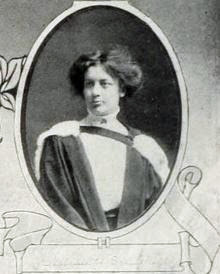Gerhard Richard Lomer
Born on March 6, 1882, Montreal, QC; died on January 14, 1970, Ottawa, ON
Education:
1903 BA (McGill)
1904 MA (McGill)
1910 PhD (Columbia)
1910 Doctors Diploma in Education, Columbia Teacher’s College
1936 Fellow of Library Association (UK)
Positions:
1904-1906 Instructor in English, McGill University
1907-1908 Lecturer in Education, Montreal Normal School
1909-1912 Instructor in Education, University of Wisconsin
1912-1917 Instructor in English, Columbia University School of Journalism
1918-1920 Assistant editor of two series, “Chronicles of America” and “Warner’s Library of the World’s Best Literature”
1920-1947 University Librarian, McGill
1927-1949 Director and Professor of Library Administration, McGill Library School
1959-1970 Assistant Director of Library School and Professor, University of Ottawa
Publications (major works):
Articles:
Lomer, G.R. (1906). “Education as university study.” McGill University Magazine 5 (May): 322-345.
Lomer, G.R. (1930). “The university library: 1920-1930.” McGill News 11 (4, September): 7–11.
Lomer, G.R. (1937). “The Quebec Library Association.” Ontario Library Review 21 (1): 10–11.
Lomer, G.R. (1942). “The Redpath Library: half a century, 1892-1942.” McGill News 24 (1, Autumn): 9–13.
Lomer, G.R. (1946). “Background of the Canadian L.[ibrary] A.[ssociation].” Library Journal 71 (September): 1107–1110.
Lomer, G.R. (1949). “Some occupational diseases of the librarian.” Canadian Library Association Bulletin 6 (1): 2–11.
Lomer, G.R. (1957). “The Quebec Library Association: the first ten years.” Canadian Library Association Bulletin 14 (3): 103-106.
Lomer, G.R. (1966). “Alice One Hundred.” Canadian Library 23 (2): 80-85.
Lomer, G.R. (1968). “1946—the prospect [for CLA].” In Librarianship in Canada, 1946-1967: essays in honour of Elizabeth Homer Morton, ed. by Bruce B. Peel, pp. 20-21. Victoria: Canadian Library Association.
Books:
Lomer, G.R. (1910). The concept of method. New York: Teacher’s College, Columbia University [Lomer’s original Ph.D dissertation].
Lomer, G.R. and Margaret E. Ashmun (1914). The study and practice of writing English. Boston: Houghton Mifflin. [2nd ed. in 1917].
Lomer, G.R. (c.1920). The Library of McGill. Montreal: McGill Centennial Endowment Campaign.
Lomer, Gerhard R. and Margaret S. MacKay (1924), eds. A catalogue of scientific periodicals in Canadian libraries. Montreal: McGill University and the Honorary Advisory Council for Scientific and Industrial Research.
Lomer, G.R. (1927). Library administration: lecture and study outlines. Montreal: McGill University Library School.
Lomer, G.R. (1932). Report on a proposed three-year demonstration of library service for Prince Edward Island. Montreal: McGill University Library.
Lomer, G.R. (1954). Stephen Leacock: a check-list and index of his writings. Ottawa: National Library of Canada.
Associations/Committees:
President, Quebec Library Association, 1932-1933
Member, Canadian Library Council, Inc., 1943-1946
Membership in national and provincial library associations: charter member of Canadian Library Association and Quebec Library Association
Member of American Library Association: various committees in 1930s such as Suggested Code of Ethics Statement (1930), Carnegie Grants-in-Aid; and host city for ALA Montreal Conference, 1934. Elected as Council member and later Executive Board member, 1946-1947.
Accomplishments:
Gerhard Lomer was already an accomplished educator, teacher, and scholar before he became McGill's University Librarian and Director of the Library School in 1920. He was a worthy successor to Charles Gould, having established a successful academic career and taught courses at the McGill summer library school. Although his career as an administrator was clouded by unrelenting financial austerity during the Great Depression and the Second World War, Lomer oversaw the steady growth of McGill’s collections. However, his main contribution to Canadian librarianship was progressive leadership in graduate library education at McGill. With the financial support of the Carnegie Corporation, which contributed $139,000 over the period 1927-40, Lomer established Canada’s first ALA accredited one-year Bachelor of Library Science program (1931) and organized summer courses in Prince Edward Island, British Columbia, and Alberta to address demand for positions. By the time of his retirement as library school director in 1949, McGill’s reputation was firmly established. In retirement, Lomer continued to contribute to library education as assistant director and teacher at the University of Ottawa.
Sources:
Burgoyne, St. George (1920). “McGill’s new librarian.” Canadian Bookman 2 (January): 11.
Brown, Jack E. (1947). “Dr. Lomer’s retirement from the Redpath Library.” Canadian Library Association Bulletin 4 (October): 23-24.
Lomer, G.R. (1960). List of publications. Ottawa: n.p. [bibliography of his writings to May 1960].
Jenkins, Kathleen (1970). “Gerhard Richard Lomer.” Canadian Library Journal 27 (1): 130.
McNally, Peter F. (1988). “Scholar librarians: Gould, Lomer and Pennington.” Fontanus 1: 95–104 [pdf dowload].




